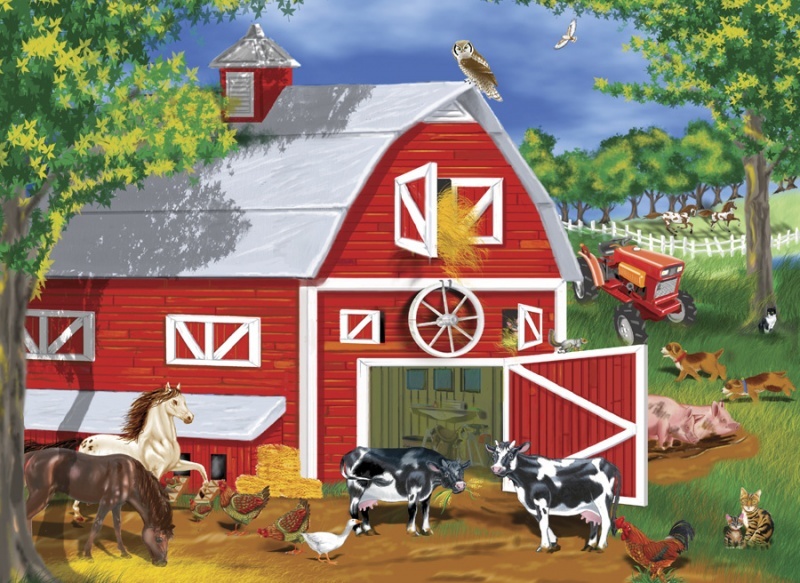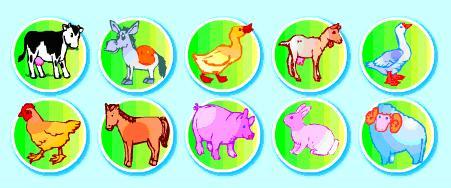Урок в 5 классе по теме: On the Farm. Animal Language
March 11, 2013
Класс: 5
Тема: On the Farm. Animal Language
Цель: Формирование навыков монологической речи
Задачи:
Создать условия для формирования лексических навыков и навыков монологической речи по теме «Animal Language».
Способствовать совершенствованию навыков восприятия и понимания речи на слух.
Содействовать формированию грамматических навыков употребления существительных, образующих множественное число не по правилам.
Прогнозируемый результат:
К концу урока учащиеся будут знать, какие звуки издают животные, живущие на ферме, и смогут выполнить Sound Quiz, сопровождая прослушивание пояснениями на английском языке
Цели на языке учащихся Today you will learn the way farm animals talk to people.
WILF
1) Правильное употребление существительных, образующих множественное число не по правилам
2) Правильное называние всех животных и звуков, которые они издают
3) Умение узнать животное по издаваемому звуку и рассказать о нём
Оснащение урока: компьютер, проектор, карточки
Ключевой вопрос: What language do farm animals speak? Why is it important to know their language?
I. Организационно-мотивационный этап.
Аt the previous lesson we followed Rotty and Moldy on the farm, learned the names of farm animals and their babies and the names of their homes. Today we continue our investigation, but we mustn’t be recognized by anybody. So let’s pretend we are farmers. And the first job is to discover the theme for our today’s lesson. Listen and guess.
Скачать Animals Talk Music by Brad Trofin and Peter Weatherall
II. Операционно-познавательный этап.
1) Answer my questions:
Where do domestic animals live? (Cows live in a barn. Bees live in a hive. etc)
What are their babies called? (A baby cow is called a calf. A baby bee is called a larva. etc.)
What do they eat and drink?
What do farmers usually do on the farm?
How do farmers look after their animals? Is it an easy or a hard job?
Do you need special knowledge to live on the farm?
2) Which questions were difficult for you to answer? You see, we must have some preparations in order to behave like real farmers. And here is the first secret.
Grammar Top Secret
a goose — geese
a mouse — mice
a man [mæn] — men [men]
a woman [‘woman] — women [‘wimin]
a child [t∫aild] — children
a sheep – sheep
Do the exercise. Fill in the gaps.
On the farm we can see two ____ (a man), three ____ (a woman), four _____ (a child), ten ____ (a goose), twenty _____ (a sheep) and five_____ (a mouse).
The women are feeding______ (the goose). The men are looking after ______ (the sheep). The children are playing, they are not afraid of _____ (the goose) and _____ (the mouse).
3) Now I’d like to check your knowledge of farm animals. I’m sure you know these animals but can you guess them from my description? Let’s do Animal Picture Test beforehand. Match the animal and the picture.
- G**** – a long-necked bird
- S**** – has woolly fur
- R***** – has long ears
- P**– likes to roll around in mud
- H**** – strong, can run very fast
- H** – gives us eggs
- C**– gives us milk
- D***** – patient but stubborn
- D*** – makes a quacking sound
- G*** — has hollow (изогнутые) horns and eats almost anything
Этот же тест в формате pdf на BOX
4) If an animal is lost what should you do? (First, in the morning you should count them. Second, you should know what sounds they make in order to find them.)
Let’s learn common animal language.
Bees — buzz
birds – tweet
calves – bleat
camels — grunt
cats — meow
chickens — peep
hens — cluck
cows – moo
dogs — bark
donkeys — hee-haw
ducks — quack
frogs – croak
geese — cackle, quack
goats — bleat, baa
horses – neigh
sheep — bleat, baa
mice — squeak
pigs — grunt, oink
rabbits — squeak, drum
sheep — bleat, baa
turkeys — gobble
5) And now let’s learn very special animal languages.
Смотреть без рекламы на SafeShare
6) This is a list of animal sounds. Make sentences.
| Dogs | say | Bla-bla-bla! |
| Cats | Neigh-neigh! | |
| Cows | Moo-moo! | |
| Sheep | Woof-woof! | |
| Horses | Miaow-miaow! | |
| Pigs | Quack-quack! | |
| Frogs | Oink-oink! | |
| Mice | Tweet-tweet! | |
| Ducks | Buzz-buzz-buzz! | |
| Bees | Squeak-squeak! | |
| Birds | Croak-croak! | |
| People | Baa-baa! |
7) Sound Quiz. Listen to the sounds and make notes. Discuss in groups what you’ve heard and be ready to speak about animals and the sounds they make.
Example:
Number 1 is a pig. Pigs grunt. They say oink-oink. Number 2 is a ______. ________ _________.
Скачать The Animal Sounds
III. Рефлексивно-оценочный этап.
1) Answer the questions:
— What language do farm animals speak? Why is it important to know their language?
— Farm animals depend on people for food, drink and shelter. They can’t live without us and we must take good care of them. They speak their own animal language when they want to say something to us. That is why it’s important to know their language.
2) Do the test
3) May be used as a part of homework:
а) Play a mistery word game
b) Listen and sing along: Old McDonald had a farm
Поправки к уроку.
На втором этапе урока пункт 1 следует исключить или сократить количество вопросов, так как они затягивают время и далеки от темы урока. Вместо вопросов желательно повторить лексику в игре по картинкам и по дефинициям (см. ссылки Animal Picture Test, Animal Quiz). Вместо песенки в начале урока лучше взять видео о старом Макдональде, смотреть не до конца. Поменять местами special language и common language. Common language можно дать домой в качестве справочника для выполнения задания по квизу, а на уроке опустить.



